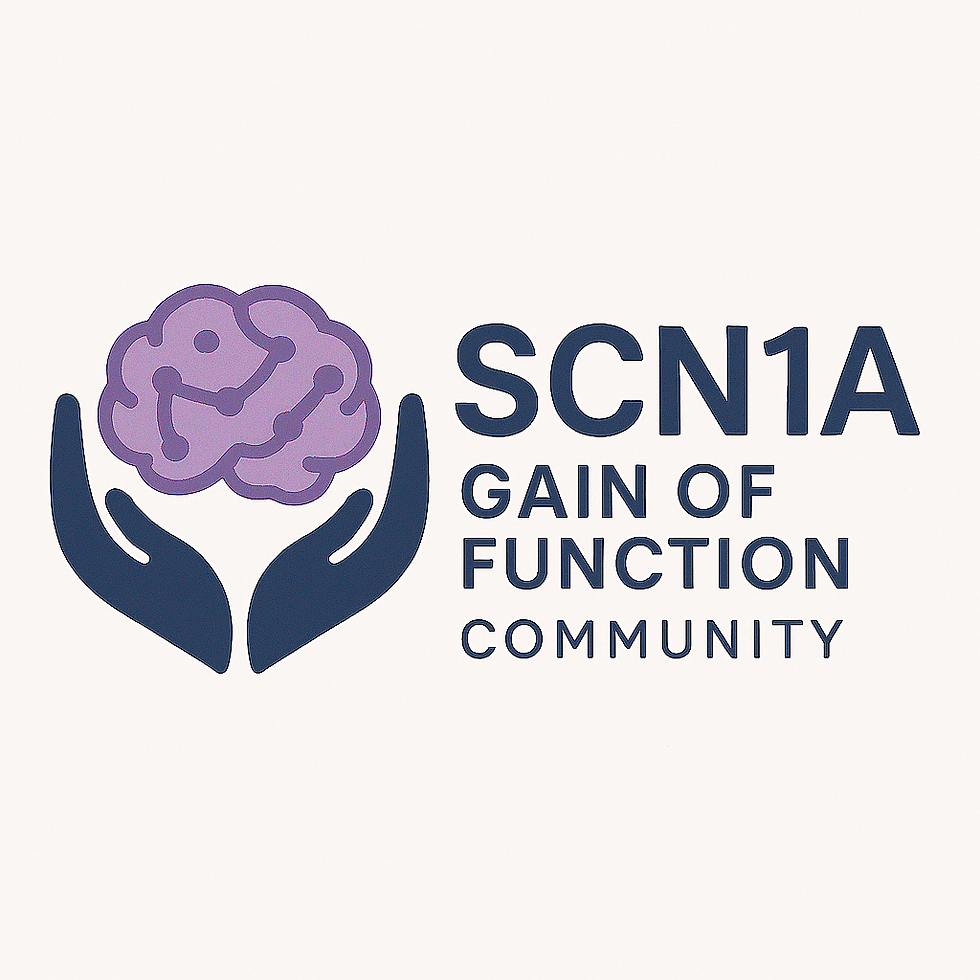Get to Know The UGDH Foundation
- Ellie Xu
- Aug 21
- 3 min read
A Mystery Begins

On March 30, 2011, a little fuzzy boy named Thaddeus was born. Thad started out as most of them do, kicking and crying. But for some reason he kept clenching his fists and pushing his head backward. He had a weak cry and couldn’t eat very well. As the months passed, he did not reach any developmental milestones. At four months of age, he started having infantile spasms.

At that point, his parents knew Thad had a devastating disease, but no amount of testing at Children’s National Medical Center could tell them what it was. In 2012, he had whole exome sequencing performed. It only found variants of uncertain significance.
Thad lived without a diagnosis for five more years. Then, he had the opportunity to participate in an international study exploring whether certain genetic variants were to blame for his symptoms.
The Disease is Discovered
In 2020, that study was published in Nature Communications. For the very first time, it explained why Thad and 35 other patients from around the world were experiencing developmental and epileptic encephalopathy. Pathogenic loss-of-function variants in the UGDH gene were causing the disease now known as Jamuar syndrome (DEE84).
Jamuar Syndrome, Explained
UGDH encodes a protein called UDP-glucose dehydrogenase (a.k.a., UGDH or UDPGDH). This protein converts UDP-glucose into UDP-glucuronate, which is a precursor in the synthesis of glycosaminoglycans (GAGs). It is thought that pathogenic variants in UGDH (primarily, missense mutations) disrupt the ability of GAGs to support brain development and communication between brain cells.
Jamuar syndrome is an autosomal recessive condition. Affected individuals present with global developmental delay, speech impairment, intellectual disability, and epilepsy. Epilepsy patterns can be highly variable among patients. Other features include axial hypotonia, movement disorder, and feeding difficulties. Brain imaging may show non-specific findings including delayed myelination, enlarged ventricles, cerebral atrophy, cerebellar atrophy, and thin corpus callosum. As for disease frequency, it is ultra-rare. The Nature study proposed a prevalence of 1:14,000,000 to 1:2,000,000. (See Hengel, H., Bosso-Lefèvre, C., Grady, G. et al. Loss-of-function mutations in UDP-Glucose 6-Dehydrogenase cause recessive developmental epileptic encephalopathy. Nat Commun 11, 595 (2020).)
The UGDH Foundation is Born
The same year that the groundbreaking study in Nature was published, Connor was born. Like Thad, his challenges began immediately, but it still took several months to get diagnosed with Jamuar syndrome. Connor experienced developmental delay, intractable seizures, hypotonia, feeding intolerance, and respiratory distress. After his passing on October 14, 2021, his mom, Alyssa, knew it was time to do something more in his honor.

That’s when she connected with Thad’s parents, Jake and Rebekah. Now that these families had a name for the disease, they could have a mission. In 2022, Alyssa, Jake, and Rebekah, along with others, formed The UGDH Foundation so an engine existed for patient networking, fundraising, and scientific collaboration for the advancement of better treatments and a cure for Jamuar syndrome. The UGDH Foundation is the only U.S.-based patient organization focused on UGDH, working in parallel with the Italian-based efforts of UGDH Italia and Progetto Flavia. Our all-volunteer board of directors carries out operations.

The UGDH Foundation Today
As of August 2025, our patient network includes 25 families from at least nine countries, which is a significant percentage of known cases. We are aware of 11 cases in the United States and some dozens worldwide, though we expect it is underdiagnosed. Some of the patients in our network are affected as profoundly as Connor and Thad; others are walking, eating by mouth, and able to say some words.

Much is still unknown about the disease mechanism and genotype-phenotype correlation. We’re immediately focused on building our patient family network and promoting natural history collection. We’re also pleased to be preparing our first pilot grant in 2025 in coordination with the Orphan Disease Center Million Dollar Bike Ride pilot grant program. Our excellent and motivated Scientific Advisory Board is assisting us with the development of a UGDH-specific research roadmap.

As challenging as it is to confront Jamuar syndrome, it’s an exciting time for rare disease research. We’re grateful for the critically helpful collaborations we’ve found in the Rare Epilepsy Network and other coalitions.
By Rebekah Hall, Chair of The UGDH Foundation










Comments